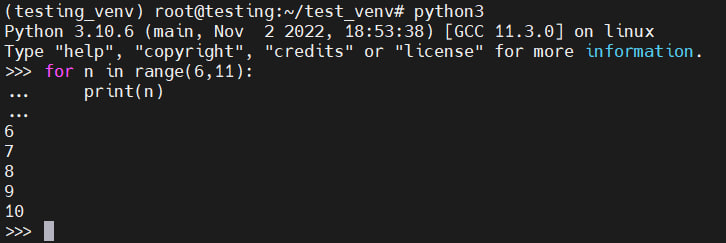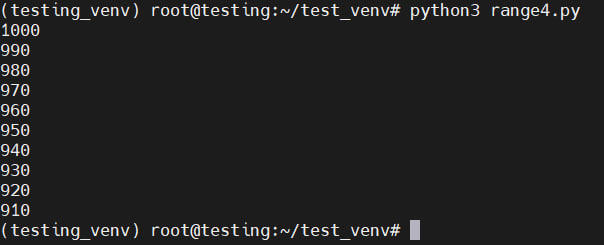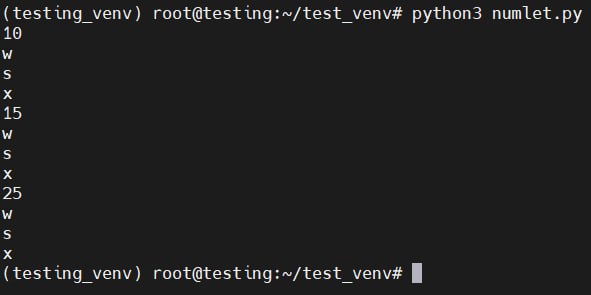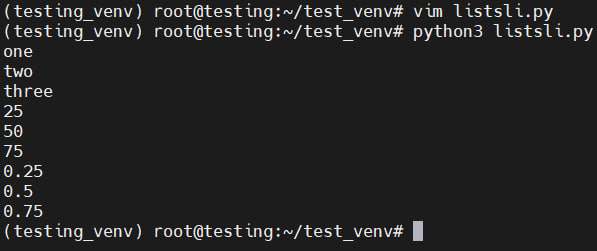Introduction
In programming, a For loop is traditionally understood as a control flow statement used to repeat a block of code a specific number of times — that is, when the number of iterations is known beforehand. However, in Python, the For loop is more versatile and general-purpose compared to many other programming languages. Instead of strictly relying on a fixed number of repetitions, Python’s For loop is designed to iterate over any iterable object such as lists, tuples, strings, or ranges. This means that while you often use a For loop when you know the number of iterations in advance, the loop can also process items one by one in a sequence without explicitly managing a counter. This contrasts with the While loop, which continues to execute as long as a specified condition remains true, making it better suited for situations where the number of iterations is unknown or variable. Understanding the distinction between For and While loops in Python is fundamental for writing efficient and readable code, especially when working with collections or performing repetitive tasks.
Preparations before we start
Before we can start, we need to do two steps:
- Install OC running on Ubuntu/Debian/CentOS and make a first configuration of system;
- Install and configure virtual environment on Python.
Loop "For"
The For loop construction looks like this:
for 'variable' in 'sequence':
'action'Let's look on an execution a loop inside the Python command interpreter.
We'll write a small programm, the variable n is assigned after it and it is going to print numbers from 6 to 11 and using the print().
for n in range(6,11):
print(n)
In programming, indexing of numbers starts with 0, for this reason, as a result, we see 5 different values that range from six to eleven.
Using range() in a loop "For"
One of the built-in sequences is range() to control how many times our loop will iterate.
range() has three parameters:
- Start – is the beginning of the sequence (optional parameter and default value 0)
- Stop – is the sequence stop point (required)
- Step – is a sequence step (optional parameter and default value 1).
Consider the code with a for loop in which we assign the variable n and the value 15 (the stop parameter) to range() so that the sequence is in this range:
for n in range(15):
print(n)To stop the loop, parameter 15 was specified, so as a result we got 15 values from 0 to 14, excluding the number 15.
Let's look at the code using the range(start/stop) parameters, define a for loop, assign the variable n, and provide the values as the start and stop parameters.
for n in range(10,15):
print(n)
When we determined the start and stop point, we got a result in the range from 10 to 15, excluding the number 15.
The step parameter is used to specify the step between the start and stop values. Consider the use of steps in the range in the following code, declare the for loop and the variable n in it, assign values to the start/step/stop parameters:
for n in range(25,50,5):
print(n)
The result is 5 different values in the range 25-50 using the value 5 as steps.
You can specify a negative number as the step parameter, as shown in the following example. Let's declare a for loop and a variable, assign the values 1000,900,-10 to the range parameters. To iterate in reverse order:
for n in range(1000,900,-10):
print(n)
We looked at a program where the starting point is 1000 and using reverse iteration got values up to 910.
Using a List in a Loop
In loops, you can use a list as iteration parameters. Instead of range(), you can designate a variable before the for loop and use the variable after in.
Consider the code with a list variable that accepts several words, then declare a for loop with a list variable and go through the data from this list:
list = ['one', 'two', 'three', 'four']
for list in list:
print(list)

In this example, we considered calling data from a list designated in advance. Instead of the list variable, we could use another variable, but the result would be the same.
Because lists and other data types are iterable, they can be combined with the range() function.
Let's select a variable from the example above, declare a for loop with the item variable, specify the length of the list list in the range() parameters. In the next line, using append, add the word five to the list of the variable list:
list = ['one', 'two', 'three', 'four', 'five']
for item in range(len(list):
list.append('six')
print(list)

In this example, we have added 5 words six equal to the number of words from list.
We can also use the for loop to create a list with different values. In the following example, let's denote the numbers variable, in which we will declare a list. Let's add a for loop and parameter 25 to the range() function. In the next line, we write a function to initialize our empty list with the value n, which will complement the list:
numbers = [ ]
for n in range(25):
numbers.append(n)
print(numbers)

In the example, we considered a variable without a list, then added a loop in which the range is from 0 to 25 and using append, +1 value is added to 0 and beyond.
In the same way, we can iterate over a string with characters.
Let's declare the word variable and assign the word quickly to it, using the for loop, let's iterate over the word:
word = 'quickly'
for letter in word:
print(letter)

In the example above, the for loop iterated over the word quickly and split it into lines.
You can use a dictionary in a for loop. As you know, the dictionary uses the key, the first word before the colon, followed by the word assigned to the key. To properly call a key value through colons, consider the following example:
list_dict = {'name': 'ServerSpace', 'year': '2022'}
for key in list_dict:
print(key + ':' + list_dict[key])

In the example above, the variable key was used to represent the key, and list_dict[key] was used to represent the values.
Nested For Loops
A nested loop is a loop inside a for loop and the nested loop construct is as follows:
for 'first variable to iterate' in 'source loop'
'action'
for 'second variable to iterate' in 'nested loop'
'action'The program first executes the first iteration of the original loop, then goes to the outer loop and executes all iterations, returns to the original loop and executes the next iteration, and so on until the end of the iteration of the original loop. Consider in the following example, we will declare a variable num with integer data types and let with characters.
In the original loop, declare the for loop and the num variable, in the outer let:
num = [10, 15, 25]
let = ['w', 's', 'x']
for number in num:
print(number)
for letter in let:
print(letter)

Let's complicate the problem with a list within a list. Let's try to extract the information in separate lines:
- Let's declare the list_in_list variable and add our list inside the variable;
- Let's add the original loop with the variable list and list_in_list;
- In the loop, declare item inside list;
- Let's call item.
list_in_list = [['one', 'two', 'three'], [25,50,75], [0.25, 0.50, 0.75]]
for list in list_in_list:
for item in list:
print(item)

Conclusions
We just looked through:
- Sequences range();
- Lists and dictionaries;
- Nested loops inside the original loop.
In conclusion, mastering the for loop in Python 3 is essential for efficient and effective programming. We've explored how to iterate over sequences using range(), navigate through lists and dictionaries, and implement nested loops for more complex data processing. With these fundamentals, you’re well-equipped to handle a wide range of coding tasks, making your Python programs more powerful and versatile. Keep practicing to deepen your understanding and unlock even more possibilities with loops.
FAQ: Python For Loop Basics and Usage
- What is a For loop in Python?
A For loop in Python is a versatile control flow statement used to iterate over sequences like lists, tuples, strings, and ranges. Unlike traditional For loops in other languages that rely solely on a fixed number of repetitions, Python’s For loop can iterate over any iterable object, making it ideal for processing collections of data. - How does the Python For loop differ from the While loop?
While the For loop is typically used when the number of iterations is known or when iterating over a sequence, the While loop executes as long as a specified condition remains true, making it suitable for cases where the iteration count is uncertain or dynamic. - How does the range() function work in Python For loops?
The built-in range() function generates a sequence of numbers that can be used in For loops. It accepts up to three parameters — start, stop, and step — allowing you to control the sequence's beginning, end (exclusive), and increment, including negative steps for reverse iteration. - Can For loops iterate over lists, strings, and dictionaries?
Yes! Python For loops can iterate over various iterable data types. You can loop through each item in a list or string, and when looping over dictionaries, you can access keys, values, or both using the appropriate methods. - What are nested For loops and when should I use them?
Nested For loops are loops placed inside other loops. They are useful for processing complex data structures like lists within lists or performing multi-dimensional iterations, enabling you to handle more advanced data manipulation tasks. - Why is mastering For loops important in Python programming?
Understanding For loops is fundamental to writing efficient, readable, and powerful Python code. Mastery of loops enables you to automate repetitive tasks, process data collections effectively, and build complex algorithms with ease.



